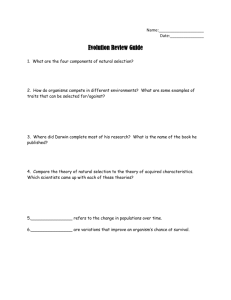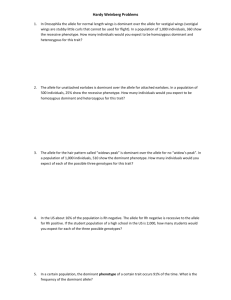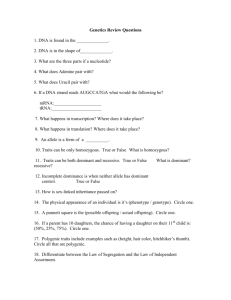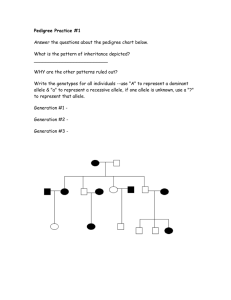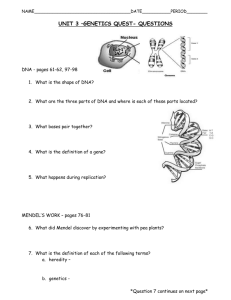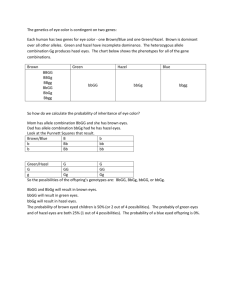CHAPTER 5
advertisement
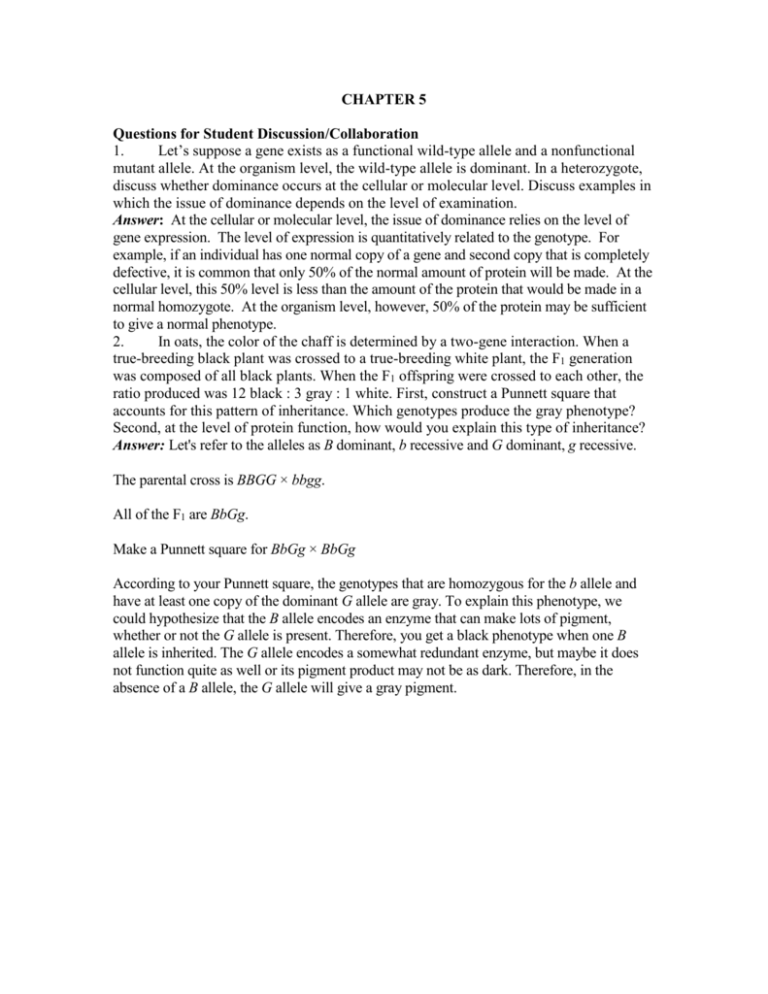
CHAPTER 5 Questions for Student Discussion/Collaboration 1. Let’s suppose a gene exists as a functional wild-type allele and a nonfunctional mutant allele. At the organism level, the wild-type allele is dominant. In a heterozygote, discuss whether dominance occurs at the cellular or molecular level. Discuss examples in which the issue of dominance depends on the level of examination. Answer: At the cellular or molecular level, the issue of dominance relies on the level of gene expression. The level of expression is quantitatively related to the genotype. For example, if an individual has one normal copy of a gene and second copy that is completely defective, it is common that only 50% of the normal amount of protein will be made. At the cellular level, this 50% level is less than the amount of the protein that would be made in a normal homozygote. At the organism level, however, 50% of the protein may be sufficient to give a normal phenotype. 2. In oats, the color of the chaff is determined by a two-gene interaction. When a true-breeding black plant was crossed to a true-breeding white plant, the F1 generation was composed of all black plants. When the F1 offspring were crossed to each other, the ratio produced was 12 black : 3 gray : 1 white. First, construct a Punnett square that accounts for this pattern of inheritance. Which genotypes produce the gray phenotype? Second, at the level of protein function, how would you explain this type of inheritance? Answer: Let's refer to the alleles as B dominant, b recessive and G dominant, g recessive. The parental cross is BBGG × bbgg. All of the F1 are BbGg. Make a Punnett square for BbGg × BbGg According to your Punnett square, the genotypes that are homozygous for the b allele and have at least one copy of the dominant G allele are gray. To explain this phenotype, we could hypothesize that the B allele encodes an enzyme that can make lots of pigment, whether or not the G allele is present. Therefore, you get a black phenotype when one B allele is inherited. The G allele encodes a somewhat redundant enzyme, but maybe it does not function quite as well or its pigment product may not be as dark. Therefore, in the absence of a B allele, the G allele will give a gray pigment.


